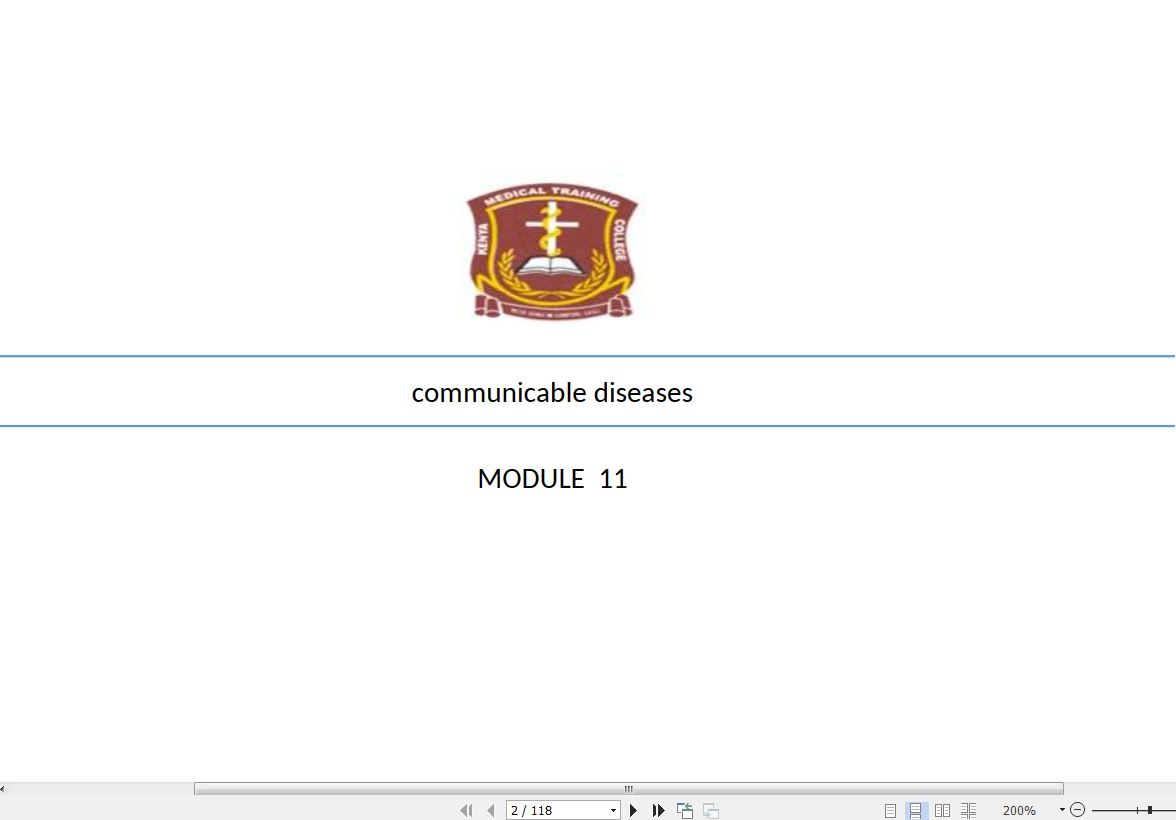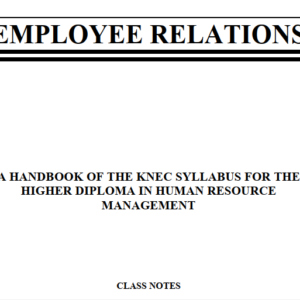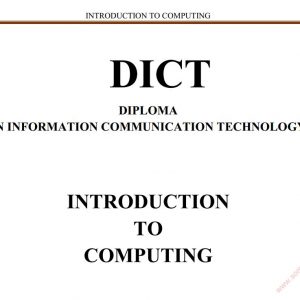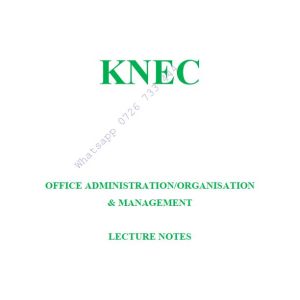Description
Table of contents
Module Competence…………………………………………………………………………………………………………1
Module Outcomes……………………………………………………………………………………………………………1
Module Units…………………………………………………………………………………………………………………..1
ENVIRONMENT…………………………………………………………………………………………………………2
MODE OF TRANSMISSION………………………………………………………………………………………..3
Clinical Features…………………………………………………………………………………………………………..3
Diagnosis…………………………………………………………………………………………………………………….4
Management………………………………………………………………………………………………………………..4
POLIOMYELITIS……………………………………………………………………………………………………………5
Factors that increases risk of paralysis:…………………………………………………………………………..7
Management of polio outbreaks:…………………………………………………………………………………….9
TUBERCULOSIS (KOCH’S DISEASE)……………………………………………………………………….10
Mode of Transmission…………………………………………………………………………………………………10
Mycobacterium Bovis………………………………………………………………………………………………….10
Mycobacterium Avium:……………………………………………………………………………………………….11
Early Signs and Symptoms of Tuberculosis……………………………………………………………………11
Late Signs and Symptoms of Tuberculosis…………………………………………………………………….11
Management………………………………………………………………………………………………………………11
Dosage for Anti-Tuberculosis Drugs……………………………………………………………………………..12
2ERHZ/6EH………………………………………………………………………………………………………..13
2RHZ/6EH…………………………………………………………………………………………………………..13
Third Regimen……………………………………………………………………………………………………………13
Intensive Treatment Phase……………………………………………………………………………………..13
Continuation Treatment Phase II…………………………………………………………………………….13
Common Complications of Tuberculosis……………………………………………………………………….14
Prevention and Control………………………………………………………………………………………………..14
Complications…………………………………………………………………………………………………………….15
Treatment…………………………………………………………………………………………………………………..15
Prevention through Routine Vaccination……………………………………………………………………16
DIPTHERIA………………………………………………………………………………………………………………16
Symptoms…………………………………………………………………………………………………………………….16
1
lOMoARcPSD|15414015Respiratory Diphtheria……………………………………………………………………………………………..16
Prevention……………………………………………………………………………………………………………………16
Vaccination……………………………………………………………………………………………………………….16
Antibiotics…………………………………………………………………………………………………………………17
Diphtheria Skin Infection…………………………………………………………………………………………..17
Diagnosis and Treatment………………………………………………………………………………………………17
Diagnosis…………………………………………………………………………………………………………………..17
Treatment…………………………………………………………………………………………………………………17
WHOOPINGCOUGH (PERTUSSIS)……………………………………………………………………………18
Management:……………………………………………………………………………………………………………….19
HEPATITIS……………………………………………………………………………………………………………….20
What is hepatitis?……………………………………………………………………………………………………..20
Hepatitis A…………………………………………………………………………………………………………….20
Hepatitis B…………………………………………………………………………………………………………….20
Hepatitis C…………………………………………………………………………………………………………….20
Hepatitis D…………………………………………………………………………………………………………….20
Hepatitis E…………………………………………………………………………………………………………….21
Causes of hepatitis…………………………………………………………………………………………………….21
Causes of noninfectious hepatitis…………………………………………………………………………….21
Common symptoms of hepatitis…………………………………………………………………………………21
How hepatitis is diagnosed…………………………………………………………………………………………22
History and physical exam……………………………………………………………………………………..22
Liver function tests…………………………………………………………………………………………………22
Other blood tests……………………………………………………………………………………………………22
Liver biopsy…………………………………………………………………………………………………………..22
Ultrasound…………………………………………………………………………………………………………….23
How hepatitis is treated……………………………………………………………………………………………..23
Hepatitis A…………………………………………………………………………………………………………….23
Hepatitis B…………………………………………………………………………………………………………….23
Hepatitis C…………………………………………………………………………………………………………….23
Hepatitis D…………………………………………………………………………………………………………….24
Hepatitis E…………………………………………………………………………………………………………….24
Autoimmune hepatitis…………………………………………………………………………………………….24
2
lOMoARcPSD|15414015Prevent hepatitis:………………………………………………………………………………………………………24
Vaccines…………………………………………………………………………………………………………………24
Reducing exposure…………………………………………………………………………………………………24
Pneumonia…………………………………………………………………………………………………………………25
Pathogen: Streptococcus pneumoniae and Haemophilus influenzae. Pneumonia is a serious
disease of the lungs……………………………………………………………………………………………………..25
Rotavirus……………………………………………………………………………………………………………………26
Rotavirus Symptoms…………………………………………………………………………………………………26
Rotavirus Causes and Risk Factors……………………………………………………………………………27
Rotavirus Diagnosis…………………………………………………………………………………………………..27
Rotavirus Treatment and Home Remedies…………………………………………………………………27
Rotavirus Prevention…………………………………………………………………………………………………28
H.INFLUENZA………………………………………………………………………………………………………….28
Types of Haemophilus influenzae Infections…………………………………………………………………..28
Causes, How It Spreads, and People at Increased Risk…………………………………………………..28
Causes………………………………………………………………………………………………………………………28
How it spreads…………………………………………………………………………………………………………..29
People at increased risk……………………………………………………………………………………………..29
Signs and Symptoms…………………………………………………………………………………………………….29
Pneumonia…………………………………………………………………………………………………………………29
Bloodstream infection………………………………………………………………………………………………..29
Prevention……………………………………………………………………………………………………………………30
Vaccine……………………………………………………………………………………………………………………..30
Re-infection………………………………………………………………………………………………………………30
Preventive antibiotics………………………………………………………………………………………………..30
YELLOW FEVER………………………………………………………………………………………………………30
What is yellow fever?……………………………………………………………………………………………………..31
Diagnosis:…………………………………………………………………………………………………………………….32
Differential diagnosis……………………………………………………………………………………………………..32
TREATMENT:…………………………………………………………………………………………………………….32
Prevention and control measures…………………………………………………………………………………..33
UNIT 4: FAECAL ORAL DISEASES…………………………………………………………………………..35
AMOEBIASIS……………………………………………………………………………………………………………38
3
lOMoARcPSD|15414015ENTERIC FEVERS:…………………………………………………………………………………………………..39
TYPHOID FEVER……………………………………………………………………………………………………..39
BACILLARY DYSENTERY (SHIGELLOSIS)……………………………………………………………..40
FOOD POISONING:……………………………………………………………………………………………………..44
TUBERCULOSIS AND LEPROSY……………………………………………………………………………..47
PULMONARY TB (PTB)……………………………………………………………………………………………49
EXTRA-PULMONARY TB (EPTB)…………………………………………………………………………….49
LEPROSY (HANSEN’S DISEASE):…………………………………………………………………………….51
MUMPS (PAROTITIS)……………………………………………………………………………………………….53
CHICKEN POX………………………………………………………………………………………………………….54
HEMOLYTIC STREPTOCOCCAL DISEASE:……………………………………………………………..55
Respiratory Tract Infections (RTIs)………………………………………………………………………………….57
CHIKUNGUNYA:…………………………………………………………………………………………………………59
Symptoms…………………………………………………………………………………………………………………59
Diagnosis…………………………………………………………………………………………………………………..59
Treatment…………………………………………………………………………………………………………………59
MALARIA……………………………………………………………………………………………………………………60
E. Anopheles species……………………………………………………………………………………………………..60
F} Risk groups……………………………………………………………………………………………………………..60
In Human beings {asexual cycle}…………………………………………………………………………………..61
SIGNS………………………………………………………………………………………………………………………….64
Stages of malarial fever…………………………………………………………………………………………………64
Diagnosis of malaria:…………………………………………………………………………………………………….65
Management of severe complicated malaria:…………………………………………………………………66
Guidelines on quinine administration:…………………………………………………………………………..67
In absence of quinine:…………………………………………………………………………………………………..67
Prevention and control of malaria:………………………………………………………………………………..67
2.BANCROFTIAN FILARIASIS…………………………………………………………………………………….68
Species involved:…………………………………………………………………………………………………………..68
Risk groups:…………………………………………………………………………………………………………………69
Life cycle of filariasis:…………………………………………………………………………………………………..69
ACUTE PHASE:………………………………………………………………………………………………………….70
Sub acute phase:…………………………………………………………………………………………………………..70
4
lOMoARcPSD|15414015Chronic phase:……………………………………………………………………………………………………………..71
Management of Filariasis:…………………………………………………………………………………………….72
YELLOW FEVER:………………………………………………………………………………………………………..73
What is yellow fever?……………………………………………………………………………………………………73
TRANSMISSION:………………………………………………………………………………………………………..73
Signs and symptoms……………………………………………………………………………………………………..74
Differential diagnosis:…………………………………………………………………………………………………..75
TREATMENT:…………………………………………………………………………………………………………….75
Prevention and control measures:…………………………………………………………………………………75
LEISHMANIASIS:………………………………………………………………………………………………………..76
2. Population mobility………………………………………………………………………………………………..76
3. Environmental changes:…………………………………………………………………………………………76
TRYPANOSOMIASI……………………………………………………………………………………………………..77
Trypanosomiasis (Sleeping Sickness)…………………………………………………………………………….77
Mode of Transmission…………………………………………………………………………………………………77
Clinical Features :………………………………………………………………………………………………………78
Primary Stage (chancre stage) :…………………………………………………………………………………….78
Blood Stage (systemic illness)………………………………………………………………………………………78
Cerebral Stage (Sleeping sickness stage)……………………………………………………………………….78
Diagnosis…………………………………………………………………………………………………………………..79
Management………………………………………………………………………………………………………………79
Prevention and Control………………………………………………………………………………………………..77
PLAGUE:……………………………………………………………………………………………………………………..79
Mode of Transmission……………………………………………………………………………………………….79
Diagnosis…………………………………………………………………………………………………………………..79
Prevention and Control :……………………………………………………………………………………………..80
UNIT 7: NEGLECTED DISEASES………………………………………………………………………………..80
INTRODUCTION TO SCHISTOSOMIASIS……………………………………………………………………80
Snail hosts:……………………………………………………………………………………………………………………80
Risk factors………………………………………………………………………………………………………………….81
Transmission………………………………………………………………………………………………………………..81
Life Cycle:……………………………………………………………………………………………………………………82
Disease development:……………………………………………………………………………………………………83
5
lOMoARcPSD|154140151. Invasion…………………………………………………………………………………………………………………83
3. Established infection………………………………………………………………………………………………84
Late stage……………………………………………………………………………………………………………………..84
Late stage in the bladder……………………………………………………………………………………………….84
Late stage in the liver and lungs:…………………………………………………………………………………..85
3. Minimizing the risk of infection from new water conservation, irrigation schemes and
hydroelectric power development by:……………………………………………………………………………86
4. Destroying snail intermediate hosts, mainly by:………………………………………………………87
5. Treating water supplies by:…………………………………………………………………………………….87
6. Mass or selective chemotherapy In areas with high morbidity and intensity of infection:.87
RABIES………………………………………………………………………………………………………………………..90
BRUCELLOSIS:……………………………………………………………………………………………………………93
ANTHRAX…………………………………………………………………………………………………………………..94
HYDATIDOSIS/ECHINOCOCCOSIS/HYDATID DISEASE…………………………………………….96
EBOLA VIRUS DISEASE……………………………………………………………………………………………..99
SWINE FLU (H1N1 INFLUENZA VIRUS)……………………………………………………………………102
AVIAN FLU (Bird/Fowl flu)…………………………………………………………………………………………104






Reviews
There are no reviews yet.